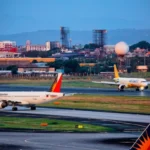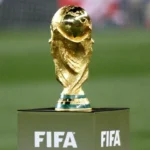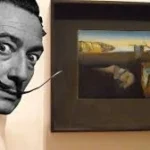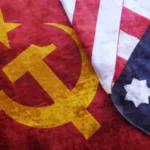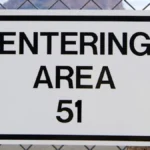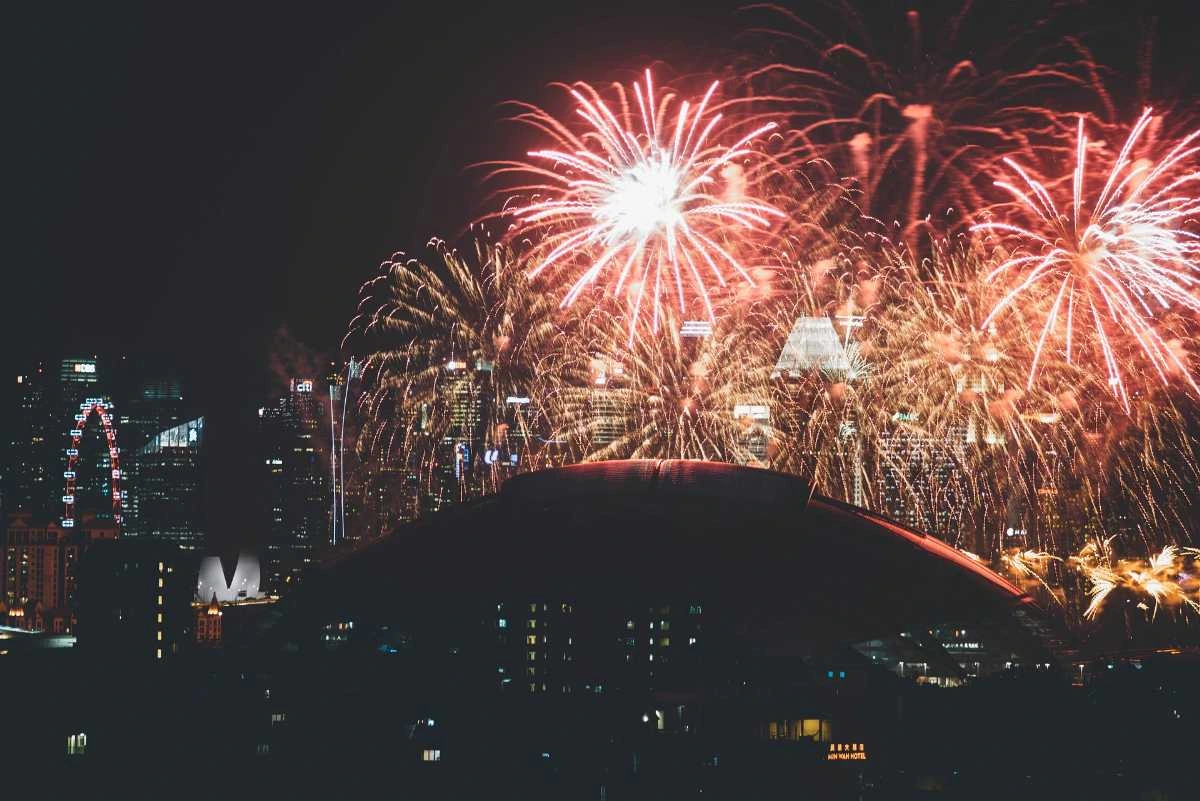
As the clock ticks down to midnight on December 31st, people around the world prepare to bid farewell to the old year and welcome in the new one with joy, reflection, and celebration. New Year’s Eve is a time steeped in tradition, filled with unique customs that vary from culture to culture. From spectacular fireworks displays to intimate gatherings with loved ones, this global event unites us in our shared hopes and aspirations for the year ahead. In this blog post, we will explore 25 interesting facts about New Year’s Eve that highlight its rich history, diverse traditions, and the fascinating ways different cultures ring in the new year. Whether you’re a seasoned celebrator or looking to learn more about this festive occasion, these intriguing insights will enhance your appreciation of this beloved holiday.
45 BC: In 45 BC, Julius Caesar reformed the Roman calendar, establishing January 1st as the beginning of the New Year. This decision was part of the Julian calendar reform, which aimed to align the calendar year with the solar year. The new calendar introduced a leap year system to correct the misalignment that had occurred over time. January was chosen to honor Janus, the Roman god of beginnings and transitions, symbolizing the fresh start that a new year represents. This change was significant as it influenced the way time was measured and celebrated in the Roman Empire and eventually in many cultures around the world.
1582: The Gregorian calendar reform was instituted by Pope Gregory XIII in 1582, which confirmed January 1st as New Year’s Day for those nations that adopted it. This reform was necessary to correct the inaccuracies of the Julian calendar, which miscalculated the length of the solar year by about 11 minutes, leading to a drift of the equinoxes over centuries. The Gregorian calendar introduced a more precise leap year system and eliminated ten days from the calendar to realign it with the seasons. Countries gradually adopted this calendar, and it became the most widely used civil calendar globally, influencing how New Year’s Day is recognized and celebrated today.
1907: The first New Year’s Eve Ball Drop celebration took place in Times Square, New York City, in 1907. This event was organized by Adolph Ochs, the owner of The New York Times, to attract attention to the area and mark the New Year with a festive spectacle. The original ball was made of iron and wood, weighing 700 pounds and measuring 5 feet in diameter. The event quickly became a New York City tradition, drawing crowds and media attention. Over the years, it evolved into a global symbol of New Year’s celebrations, with millions tuning in to watch the event from around the world.
700 pounds: The original Times Square New Year’s Eve Ball, introduced in 1907, weighed 700 pounds and was constructed from iron and wood. This ball was designed to be lowered down a flagpole as a countdown to the New Year, marking a new tradition in the heart of New York City. Its design was simple yet effective, capturing the attention of the thousands who gathered in Times Square to witness the moment. The ball drop has since become an iconic event, evolving in design and technology while retaining its historical significance as a celebration of new beginnings.
5 feet: The diameter of the original Times Square Ball in 1907 was 5 feet, allowing it to be visible to the large crowds that gathered in Times Square. This modest size was sufficient for the era and added to the charm of the event. As the celebration gained popularity, the ball’s design was updated, and it became larger and more elaborate in subsequent years. The original ball’s dimensions reflect the humble beginnings of what would become a worldwide New Year’s Eve tradition, symbolizing hope and renewal as the clock strikes midnight.
11,875 pounds: The current Times Square New Year’s Eve Ball weighs 11,875 pounds, nearly 6 tons, reflecting the evolution of the event over the years. This impressive weight is a result of the ball’s construction from Waterford Crystal, stainless steel, and LED lights, making it a stunning centerpiece for the celebration. The ball’s significant weight also adds to the spectacle of the countdown, as it descends down its specially designed flagpole, captivating millions of viewers both in-person and through broadcasts. The transformation from the original 700-pound ball to the current design showcases the advancements in technology and artistry involved in this iconic event.
12 feet: The current Times Square Ball has a diameter of 12 feet, making it a striking visual element during the New Year’s Eve celebration. This larger size allows for a more elaborate design, incorporating thousands of sparkling crystals and lights that illuminate the night sky. The ball’s impressive dimensions contribute to the grandeur of the event, drawing attention from onlookers and creating a memorable experience as it descends at midnight. The 12-foot diameter symbolizes the larger-than-life spirit of New Year’s celebrations, capturing the essence of hope and renewal that accompanies the arrival of a new year.
2,688: The current Times Square New Year’s Eve Ball is adorned with 2,688 Waterford Crystal triangles, each uniquely designed and cut to reflect light in a dazzling display. These crystals contribute to the ball’s overall brilliance, creating a captivating visual experience as they catch the light from the surrounding area. The use of Waterford Crystal adds a touch of elegance and artistry to the celebration, enhancing the festive atmosphere. Each triangle is carefully crafted, representing the craftsmanship and dedication that goes into making the ball a symbol of hope and joy for millions around the world.
32,256: The current Times Square Ball is illuminated by 32,256 Philips Luxeon Rebel LEDs, which provide vibrant colors and dynamic light displays during the New Year’s Eve celebration. These LEDs are energy-efficient and allow for a variety of lighting effects, enhancing the visual spectacle as the ball descends. The incorporation of advanced lighting technology has transformed the ball into a stunning centerpiece that captivates audiences both in Times Square and around the globe. The impressive number of LEDs not only contributes to the aesthetic appeal but also symbolizes the innovative spirit of modern celebrations, showcasing how technology can enhance traditional events.
60 seconds: The Times Square Ball takes 60 seconds to descend its pole, starting at 11:59 PM EST, marking the countdown to the New Year. This minute-long descent is a highly anticipated moment for the crowd gathered in Times Square and for viewers watching from afar. As the seconds tick down, excitement builds, and the atmosphere becomes electric with anticipation. The descent culminates at midnight, signaling the start of a new year and prompting cheers, confetti, and celebrations. This tradition has become a hallmark of New Year’s Eve festivities, embodying the collective hope and joy that accompanies the arrival of a new beginning.
70 feet: The Times Square Ball descends approximately 70 feet down its specially designed flagpole during the countdown to the New Year. This impressive height allows the ball to be visible to the massive crowds that gather in Times Square, creating a dramatic moment as it approaches the ground. The design of the flagpole and the mechanism that controls the descent is engineered to ensure a smooth and precise drop, adding to the overall spectacle of the event. The 70-foot descent has become a symbolic representation of the passage of time, marking the transition from one year to the next in a visually striking manner.
1 million+: It is estimated that over 1 million people typically gather in Times Square to watch the Ball Drop live, making it one of the largest New Year’s Eve celebrations in the world. This figure varies each year, influenced by factors such as weather and public health considerations, but the event consistently attracts massive crowds. People travel from all over the globe to experience the excitement and camaraderie of celebrating the New Year in such an iconic location. The gathering of diverse individuals, all united in celebration, creates a unique atmosphere of joy and anticipation, highlighting the significance of the event as a global cultural phenomenon.
~7,000: Approximately 7,000 police officers are typically deployed by the NYPD for security in and around Times Square on New Year’s Eve in recent years. This extensive security presence is necessary to ensure the safety of the large crowds that gather for the celebration. Officers are trained to manage the event efficiently, addressing any potential safety concerns and maintaining order throughout the festivities. The high level of security reflects the importance of public safety during such a significant event, allowing attendees to enjoy the celebration while feeling secure and protected.
12: In Spain, it is a tradition to eat 12 grapes at midnight on New Year’s Eve, one for each chime of the clock. This custom is believed to bring good luck for each month of the coming year, and many Spaniards gather with family and friends to partake in this ritual. The grapes are typically consumed in quick succession as the clock strikes twelve, creating a lively and festive atmosphere. This tradition showcases the cultural significance of New Year’s Eve celebrations around the world, highlighting the various customs and practices that people engage in to welcome the new year with hope and positivity.
8+ tonnes: Sydney Harbour’s famous New Year’s Eve fireworks display typically features over 8 tonnes (or 17,600 pounds) of fireworks, making it one of the most spectacular pyrotechnic shows globally. The City of Sydney invests significant resources into planning and executing this display, which attracts thousands of spectators both in person and through broadcasts. The fireworks are choreographed to music, creating a stunning visual and auditory experience that celebrates the arrival of the New Year. This grand display is a highlight of Sydney’s cultural calendar, showcasing the city’s vibrant spirit and creativity.
~AUD 6.5 million: The budget for the City of Sydney’s New Year’s Eve fireworks and event celebration is typically around AUD 6.5 million (approximately USD 4.5 million). This funding covers various aspects of the event, including the fireworks themselves, security, logistics, and public safety measures. The investment reflects the city’s commitment to providing a memorable experience for residents and visitors alike. The New Year’s Eve celebration in Sydney has become an iconic event, drawing attention from around the world and contributing to the city’s reputation as a global destination for festivities.
500,000+: The world-record-setting fireworks display in Dubai on New Year’s Eve 2014 featured over 500,000 individual fireworks, recognized by Guinness World Records as the largest display ever at that time. This extravagant celebration took place against the backdrop of the Burj Khalifa, the tallest building in the world, creating a breathtaking visual spectacle. The display was meticulously coordinated, with fireworks launched from various locations around the city, synchronized to music and light shows that captivated millions of viewers. The scale of this event demonstrated Dubai’s commitment to creating unforgettable experiences and solidifying its status as a premier destination for New Year’s celebrations. The impressive number of fireworks not only showcased the city’s resources and planning capabilities but also reflected the spirit of celebration and joy that accompanies the arrival of a new year.
6 minutes: The duration of Dubai’s record-breaking 2014 fireworks display was an astonishing 6 minutes, filled with a dazzling array of colors, patterns, and effects. This brief yet spectacular show captivated audiences both in-person and through broadcasts, as the fireworks illuminated the night sky above the Burj Khalifa. The carefully choreographed display was designed to maximize visual impact within the limited time frame, creating a memorable experience for all who witnessed it. The 6-minute duration exemplifies how a short but well-executed fireworks show can leave a lasting impression and become a hallmark of New Year’s celebrations.
828 meters (2,717 feet): The Burj Khalifa, standing at 828 meters (2,717 feet), is the tallest building in the world and serves as a stunning backdrop for Dubai’s New Year’s Eve fireworks and light show. This architectural marvel has become synonymous with luxury and innovation, attracting tourists and residents alike. The height of the Burj Khalifa allows for an extraordinary vantage point from which to view the fireworks, making it a focal point of the city’s celebration. The building itself is a symbol of Dubai’s rapid development and ambition, showcasing the city’s ability to host grand events that capture the world’s attention.
UTC+14: The time zone where the New Year technically begins first is UTC+14, which includes places like Kiritimati (Christmas Island) in Kiribati. This unique time zone allows these locations to celebrate the New Year ahead of most of the world, making them among the first to welcome the arrival of January 1st. The significance of this early celebration highlights the diversity of timekeeping practices, and the varying cultural traditions associated with New Year’s celebrations. As the clock strikes midnight in UTC+14, residents often partake in festivities that reflect their local customs, setting a joyful tone for the rest of the world to follow.
UTC-12: Conversely, the last places to welcome the New Year are in the UTC-12 time zone, which includes uninhabited U.S. territories like Baker Island and Howland Island. These remote locations serve as the final frontier in the global countdown to the New Year, where midnight arrives last. While there may not be large celebrations on these islands due to their uninhabited status, the concept of time zones underscores the fascinating way in which the world experiences the transition into the New Year. The existence of UTC-12 highlights the diversity of global timekeeping and the unique geographical features that influence how different regions celebrate this universal occasion.
26 hours: It takes a total of 26 hours for the New Year to officially arrive in all time zones across the world. This extended timeframe reflects the complexities of global timekeeping, and the various cultural practices associated with New Year’s celebrations. As the clock strikes midnight in each time zone, people engage in their own unique traditions, from fireworks and parties to quiet family gatherings. The staggered arrival of the New Year creates a continuous wave of festivities that spans the globe, illustrating the shared human experience of hope and renewal that accompanies the transition into a new year.
~2 million: The Réveillon celebration on Copacabana Beach in Rio de Janeiro, Brazil, often attracts around 2 million attendees, making it one of the largest New Year’s Eve parties in the world. This vibrant event is characterized by music, dancing, and spectacular fireworks, creating a festive atmosphere that draws locals and tourists alike. Participants typically dress in white, symbolizing peace and renewal, and gather on the beach to celebrate the arrival of the New Year with friends and family. The sheer scale of the celebration reflects Brazil’s rich cultural heritage and the importance of community in welcoming the new year with joy and optimism.
1788: In 1788, Robert Burns wrote the poem “Auld Lang Syne,” which has become a traditional song sung at midnight on New Year’s Eve in many English-speaking countries. The poem reflects themes of nostalgia, friendship, and the passage of time, resonating with the sentiments people often feel as they bid farewell to the old year and welcome the new one. Its catchy melody and heartfelt lyrics have made it a staple of New Year’s celebrations, prompting gatherings where friends and family join hands and sing together, creating a sense of unity and shared experience as they reflect on the year gone by.
38: New Year’s Eve is a globally celebrated event marking the transition from one year to the next, and it is observed in various time zones around the world. There are 38 different local times that celebrate this moment, including various offsets such as UTC+14, UTC+13:45, and others. These time zones illustrate the Earth’s rotation and how it divides the planet into regions that experience sunrise, sunset, and the changing of the year at different times. For instance, the first places to welcome the New Year are those in the UTC+14 zone, such as Kiritimati (Christmas Island) in the Line Islands of Kiribati, where celebrations begin a full 14 hours ahead of Coordinated Universal Time (UTC). Conversely, regions observing UTC-12, like Baker Island and Howland Island, will be among the last places on Earth to ring in the New Year. This staggering of time zones creates a fascinating global tapestry of celebrations and traditions, as people around the world countdown to midnight in their respective locales, each adding their unique cultural flair to the festivities.
Frequently Asked Questions about New Year’s Eve:
1. What is New Year’s Eve?
New Year’s Eve is the final day of the Gregorian calendar year, celebrated on December 31st. It marks the transition from the old year to the new year, and is often characterized by parties, fireworks, and various cultural traditions. People gather to reflect on the past year and celebrate the possibilities that the new year brings, often culminating in a countdown to midnight when the new year officially begins.
2. Why do we celebrate New Year’s Eve?
The celebration of New Year’s Eve has historical roots in various cultures and religions. It is a time for people to reflect on the past year, set resolutions for the upcoming year, and celebrate new beginnings. Many cultures have their unique traditions, such as fireworks, feasting, and rituals intended to bring good luck for the year ahead. The celebration is also a way to foster community and connection among friends and family.
3. How do different cultures celebrate New Year’s Eve?
Different cultures have unique customs for celebrating New Year’s Eve. For example, in Spain, it is traditional to eat 12 grapes at midnight—one for each stroke of the clock—to bring good luck. In Japan, people celebrate with a temple bell ringing 108 times to symbolize the cleansing of sins. In the United States, the iconic Times Square ball drop is a major event, while in many Latin American countries, people wear colored underwear to symbolize their wishes for the new year—red for love and yellow for prosperity.
4. What are some popular New Year’s Eve traditions?
Popular New Year’s Eve traditions include countdown parties, fireworks displays, and making resolutions. Many people also enjoy toasting with champagne at midnight. In various cultures, it’s common to engage in activities like singing “Auld Lang Syne,” which reflects on friendship and memories of the past year. Additionally, some cultures practice “first-footing,” where the first visitor to a home after midnight brings good luck.
5. What is the significance of the New Year’s countdown?
The countdown to midnight on New Year’s Eve symbolizes the transition from the old year to the new one. It represents the collective anticipation and hope for the future. As the final seconds of the year tick away, people often reflect on their experiences over the past year, express gratitude, and look forward to new opportunities and challenges. The countdown culminates in a moment of celebration, often marked by cheers, fireworks, and the ringing of bells.
6. What time do people celebrate New Year’s Eve?
Celebrations for New Year’s Eve typically begin in the evening, with many parties and events starting around 8 PM or later. The peak of the celebration occurs just before midnight, as people gather to countdown the final seconds of the year. Different time zones around the world celebrate at different times, with some regions welcoming the new year as early as 10 AM GMT on December 31st, while others celebrate as late as 12 hours later.
7. What are common New Year’s resolutions?
Common New Year’s resolutions include goals related to health, such as losing weight or exercising more, financial aspirations like saving money or budgeting better, and personal development objectives such as learning a new skill or spending more time with family. Many people also resolve to quit bad habits, such as smoking or excessive drinking. The tradition of setting resolutions reflects a desire for self-improvement and positive change in the coming year.
8. How did New Year’s Eve celebrations originate?
The origins of New Year’s Eve celebrations can be traced back to ancient civilizations. The Babylonians are believed to have been the first to celebrate the new year around 4,000 years ago, marking the occasion with a festival called Akitu. This celebration involved various rituals and was linked to the agricultural cycle. The modern Gregorian calendar, established in the 16th century, solidified December 31st as the end of the year, leading to the contemporary celebrations we see today.
9. What are some safety tips for New Year’s Eve celebrations?
To ensure a safe New Year’s Eve celebration, consider the following tips: plan ahead for transportation, such as using public transit or rideshare services if you’ll be drinking; keep an eye on your belongings in crowded areas; be cautious with fireworks and follow local laws regarding their use; and stay aware of your surroundings. If hosting a party, ensure that guests have a safe way to get home and consider offering non-alcoholic drink options.
10. What are some fun activities to do on New Year’s Eve?
Fun activities for New Year’s Eve can include hosting a themed party, playing games, watching movies, or attending local events such as concerts or fireworks displays. Many people also enjoy creating a time capsule to reflect on the past year, writing letters to their future selves, or engaging in group resolutions. Additionally, some families have traditions like cooking special meals together, sharing memories from the past year, or creating vision boards to visualize their goals for the upcoming year. Virtual celebrations have also become popular, allowing people to connect with friends and family who may be far away through video calls, sharing moments and experiences as they countdown to midnight together.



